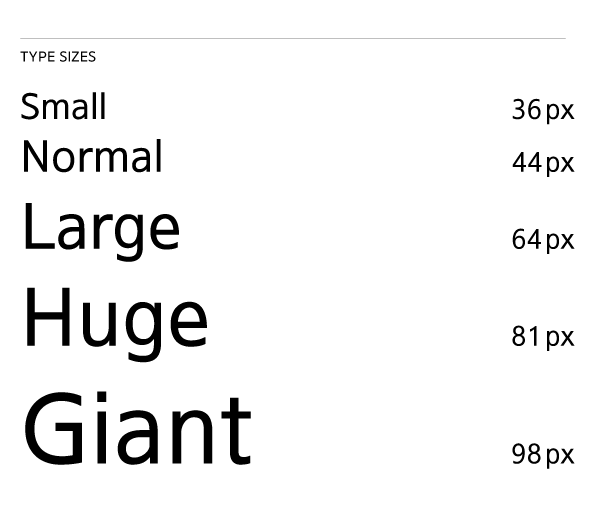Are you ready to dive into the world of typography in graphic design? Discover the power of fonts and how they can elevate your design projects. From understanding font anatomy to exploring different typeface categories, this article will guide you through the essentials. Learn how to choose the right fonts, master typography hierarchy and alignment, and enhance readability with kerning and leading. Get ready to unleash your creativity and make typography a design element that captivates your audience. Let’s get started!
The Importance of Typography in Graphic Design
Typography plays a crucial role in graphic design, allowing you to effectively communicate your message to your audience. The impact of typography on brand identity is undeniable. The fonts you choose can shape how your brand is perceived by consumers. Different fonts convey different emotions and personalities, which can greatly influence how people connect with your brand.
The psychology of fonts in graphic design is a fascinating aspect to explore. Each font has its own unique characteristics that can evoke specific emotions or associations. For example, a bold and modern font may give off a sense of confidence and professionalism, while a playful and whimsical font may create a more light-hearted and fun atmosphere. By carefully selecting the right font for your brand, you can create a visual identity that resonates with your target audience.
Moreover, typography also plays a significant role in creating consistency and recognition for your brand. By using consistent fonts across all your design materials, such as logos, websites, and advertisements, you can establish a cohesive and recognizable brand identity. This consistency helps consumers easily identify and remember your brand, which ultimately leads to increased brand loyalty and recognition.
Understanding the Anatomy of Fonts
To better understand fonts in graphic design, you should familiarize yourself with the anatomy of fonts. Typography trends in graphic design are constantly evolving, and it is crucial to stay updated with the latest styles and techniques. Typography plays a significant role in branding and logo design, as it helps convey the personality and message of a brand.
When examining the anatomy of fonts, there are several key elements to consider. The baseline refers to the imaginary line on which the letters sit, providing a sense of alignment. The x-height is the height of the lowercase letters, while the ascender and descender are the parts that extend above and below the x-height, respectively.
Other important aspects include the counter, which is the enclosed or partially enclosed space within a letter, and the stroke, which refers to the main line or curve that forms a letter. Additionally, the serif is the small decorative stroke at the end of a letter, and the terminal is the endpoint of a stroke.
Understanding the anatomy of fonts allows designers to make informed choices when selecting and combining fonts for their projects. By paying attention to these details, you can create visually appealing and effective designs that make a lasting impact.
Exploring Different Typeface Categories
Now that you have a grasp on the anatomy of fonts, it’s time to explore the different categories of typefaces. Typeface categories can be broadly classified into three main groups: serif vs. sans-serif, display vs. text, and script vs. decorative. Understanding the distinctions between these categories will allow you to choose the right typeface for your design and effectively convey your message to your audience. So, let’s delve into each category and discover their unique characteristics.
Serif Vs. Sans-Serif
Are you wondering which typeface category, serif or sans-serif, is best suited for your graphic design projects? Understanding the differences between serif and sans-serif fonts is crucial when it comes to creating visually appealing designs. Here are a few key points to consider:
- Serif Fonts: These fonts have small lines or strokes, called serifs, at the ends of characters. They are often seen as traditional and formal, making them suitable for printed materials like books or newspapers.
- Sans-Serif Fonts: In contrast, sans-serif fonts do not have these small lines. They are considered more modern and versatile, making them ideal for digital designs and websites.
- Font Pairing: When choosing between serif and sans-serif fonts, it’s essential to understand font pairing. Combining fonts from different categories can create a harmonious and visually appealing design.
Display Vs. Text
Understanding the differences between display and text typeface categories is essential for mastering typography in graphic design. Display typography refers to typefaces that are designed to be eye-catching and attention-grabbing. They are often used for headlines, logos, and other large-scale applications. Display typefaces tend to have more intricate designs and unique characteristics that make them stand out. On the other hand, text typefaces are designed for readability and legibility in smaller sizes. They are used for body text and other blocks of text where clarity and ease of reading are important. Text typefaces are typically simpler in design and have more neutral characteristics. By understanding the distinctions between display and text typefaces, you can effectively create a text hierarchy and use appropriate typefaces for different design elements.
Script Vs. Decorative
Exploring different typeface categories involves distinguishing between script and decorative typefaces. Understanding the historical significance and current trends and usage of these two categories will help you make informed design choices.
Here are some key points to consider:
- Script vs. Decorative: Historical Significance
- Script typefaces have their roots in handwriting, mimicking the fluid strokes of a pen or brush.
- Decorative typefaces, on the other hand, emerged during the Victorian era and were characterized by intricate and ornamental designs.
- Both categories have played a vital role in the evolution of typography, reflecting different artistic and cultural movements throughout history.
- Script vs. Decorative: Current Trends and Usage
- Script typefaces continue to be popular in various design applications, especially for projects that require a personal or elegant touch.
- Decorative typefaces are often used for headlines or display purposes, adding visual interest and enhancing the overall aesthetic of a design.
- However, it’s important to use these typefaces judiciously, ensuring that they align with the intended message and maintain readability.
Choosing the Right Fonts for Your Design Projects
To choose the right fonts for your design projects, consider the overall tone and message you want to convey. Typography plays a crucial role in creating a visual language that captures the essence of your design. One way to achieve cohesion in your design is by exploring font pairings. Pairing fonts that complement each other can create a harmonious and balanced look. For example, you can combine a bold and modern sans-serif font with a classic and elegant serif font for a sophisticated feel. Experimenting with different combinations can help you find the perfect balance for your design.
Typography also has the power to evoke emotions in your design projects. The choice of fonts can convey different moods and feelings. For instance, a playful and whimsical script font can bring a sense of joy and lightheartedness to a design, while a bold and angular font can evoke a sense of strength and power. By understanding the emotions associated with different fonts, you can strategically choose the right typography to enhance the overall message of your design.
Mastering Typography Hierarchy and Alignment
Now that you’ve chosen the right fonts for your design projects, it’s time to master typography hierarchy and alignment. Understanding the importance of hierarchy in your design will help you guide the viewer’s eye and create a clear visual hierarchy. Aligning your text properly is crucial for legibility and ensuring that your message is easily understood. Let’s delve into these key points to take your typography skills to the next level.
Importance of Hierarchy
What role does mastering typography hierarchy and alignment play in graphic design? Understanding the importance of hierarchy in typography is crucial for effective communication in graphic design. By mastering typography hierarchy and alignment, you can create visual compositions that guide the viewer’s eye, convey information clearly, and create a hierarchy of importance. Here are three reasons why mastering typography hierarchy and alignment is essential:
- Organizes information: Hierarchy allows you to arrange elements in order of importance, making it easier for the viewer to navigate and understand the content.
- Enhances readability: Proper alignment ensures that the text is legible and easy to read, improving the overall user experience.
- Creates visual impact: By using hierarchy and alignment effectively, you can create visually appealing designs that capture attention and engage the viewer.
In graphic design, typography hierarchy and alignment are powerful tools that help you communicate your message effectively and create visually stunning designs.
Aligning Text for Legibility
Begin by aligning your text for legibility in order to master typography hierarchy and alignment. When it comes to aligning text, there are two key factors to consider: tracking and leading techniques for optimal legibility, and the impact of font size and line length on text alignment.
Tracking refers to the spacing between characters in a line of text, while leading refers to the spacing between lines of text. Adjusting the tracking and leading can greatly affect the legibility of your text. Experiment with different settings to find the right balance for your design.
Additionally, font size and line length play a crucial role in text alignment. Larger font sizes may require more generous spacing between lines, while shorter line lengths can improve readability. Pay attention to the overall composition and ensure that your text is aligned in a way that is both visually pleasing and easy to read.
Creating Visual Hierarchy
To continue enhancing your typography skills, delve into the art of creating visual hierarchy in graphic design by mastering typography hierarchy and alignment. Visual hierarchy refers to the arrangement and organization of elements on a page to guide the viewer’s attention and create a sense of order. Here are three key techniques to create visual hierarchy:
- Size: Varying the size of your fonts can help establish a clear hierarchy. Larger fonts draw attention, while smaller fonts can be used for supporting information.
- Weight: Using different weights within a font family can create contrast and hierarchy. Bold or heavy fonts can be used for headings, while lighter weights can be used for body text.
- Font pairing: Choosing complementary fonts can enhance visual balance and create a sense of harmony. Experiment with different combinations to find the right balance between contrast and cohesion.
Enhancing Readability With Kerning and Leading
Improve legibility by adjusting kerning and leading in your graphic design projects. When it comes to typography, spacing plays a crucial role in enhancing readability and aesthetics. Kerning refers to the adjustment of space between individual characters, ensuring they are visually balanced and harmonious. By adjusting the kerning, you can eliminate awkward gaps or overlaps, making the text more pleasing to the eye. Leading, on the other hand, refers to the vertical space between lines of text. By adjusting the leading, you can improve the legibility of your text, ensuring that it is neither too cramped nor too loose. A good rule of thumb is to have enough space between lines so that the text is easy to read, but not so much that it becomes disjointed. Additionally, consider the impact of tracking and line length in enhancing readability. Tracking refers to the adjustment of space between groups of letters, while line length refers to the width of the text block. By carefully choosing font pairings and combinations, you can create a cohesive and visually appealing design that enhances the overall reading experience.
Utilizing Typography as a Design Element
Utilize typography as a powerful design element to enhance the visual impact and communication of your graphic design projects. Typography plays a crucial role in conveying a brand’s identity and message, making it a valuable branding tool. By incorporating typography effectively, you can create designs that not only catch the viewer’s attention but also communicate the intended message clearly and concisely.
Here are three ways you can incorporate typography as a design element:
- Hierarchy: Use different font sizes, weights, and styles to establish a visual hierarchy in your design. This helps guide the viewer’s eye and highlights important information, making your design more effective and engaging.
- Contrast: Experiment with contrasting fonts to create visual interest and add depth to your design. Pairing a bold, attention-grabbing font with a clean and simple one can create a striking composition that captures the viewer’s attention.
- Web Design: When designing for the web, consider the readability of your typography across different devices and screen sizes. Opt for fonts that are legible and ensure proper spacing and line height to enhance readability and user experience.
Resources and Tools for Learning Typography in Graphic Design
Explore a variety of resources and tools that can assist you in learning typography in graphic design. Typography plays a vital role in both branding and web design, so it’s essential to have a strong understanding of its principles and techniques. Fortunately, there are many resources available to help you master this skill.
One great resource for learning typography is online courses. Platforms like Skillshare and Udemy offer a wide range of courses taught by industry professionals. These courses cover everything from the basics of typography to advanced techniques and can provide you with hands-on experience to enhance your skills.
Books are another valuable resource. There are numerous typography books available, such as “Thinking with Type” by Ellen Lupton and “The Elements of Typographic Style” by Robert Bringhurst. These books delve into the history, theory, and practical aspects of typography and are excellent references for any designer.
Additionally, there are online communities and forums where you can interact with other designers and typography enthusiasts. Websites like Typophile and Behance allow you to showcase your work, receive feedback, and learn from others in the industry.
Lastly, there are several tools that can assist you in practicing and experimenting with typography. Adobe Creative Cloud offers software like Adobe Illustrator and Adobe InDesign, which are widely used in the design industry. There are also online tools like Google Fonts and Typewolf that provide access to a vast collection of fonts and offer inspiration for your projects.



